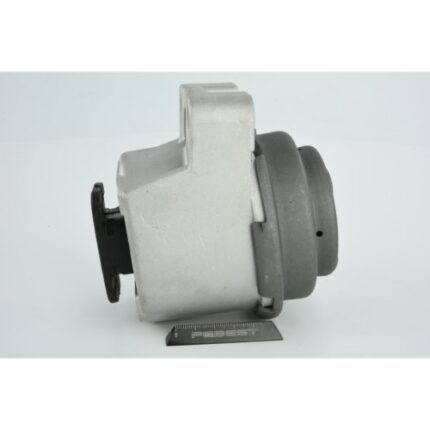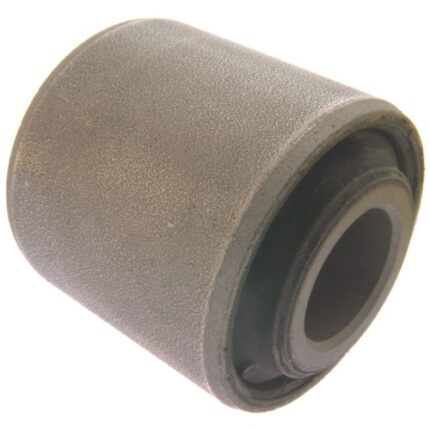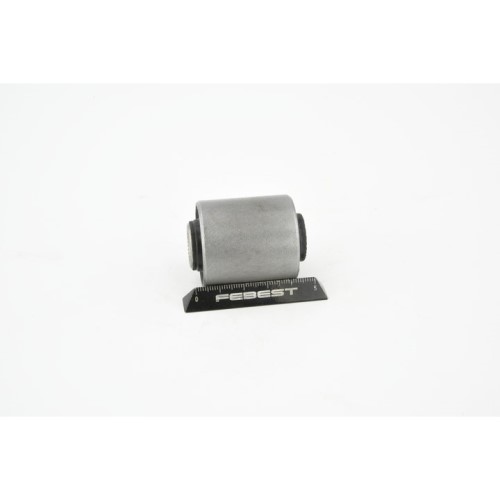-20%
Get Toyota Mark X GRX120/1/5 GRX130/3 / Crown GRS180/1/2/3/4 Rear Axle Bush
The rear axle bushings, also known as rear axle suspension bushings or rear axle beam bushings, are essential components of a vehicle’s suspension system, particularly in vehicles with rear-wheel or all-wheel drive. These bushings are typically located where the rear axle connects to the vehicle’s chassis or subframe. Their primary function is to provide a cushioned mounting point for the rear axle, allowing it to pivot and move relative to the chassis while minimizing vibrations and noise transmission to the vehicle’s cabin.
Benefits;
1. Suspension Stability and Control:
- Enhanced Stability: Rear axle bushings help to stabilize the rear suspension system, providing a solid connection between the axle and the vehicle chassis. This enhances overall vehicle stability, especially during cornering and maneuvering.
2. Smooth Ride Quality:
- Vibration Dampening: By absorbing road shocks and vibrations, rear axle bushings contribute to a smoother and more comfortable ride for passengers. They minimize the transmission of road imperfections and bumps to the vehicle cabin, reducing driver and passenger fatigue.
3. Precise Wheel Alignment:
- Maintains Alignment: Rear axle bushings ensure proper alignment of the rear wheels, which is crucial for optimal handling, tire wear, and overall vehicle performance. They help to prevent misalignment issues that can lead to uneven tire wear and reduced handling capabilities.
4. Reduced Noise, Vibration, and Harshness (NVH):
- Noise Reduction: Rear axle bushings dampen vibrations and noise transmitted from the road to the vehicle chassis, resulting in a quieter and more refined driving experience. They help to minimize NVH levels, enhancing overall comfort and refinement.
5. Long-Term Durability:
- Enhanced Component Lifespan: High-quality rear axle bushings contribute to the long-term durability and reliability of the vehicle’s suspension system. They withstand constant movement, road shocks, and environmental factors, ensuring consistent performance over time.
6. Improved Handling and Control:
- Enhanced Handling: Rear axle bushings play a critical role in maintaining proper wheel alignment and suspension geometry, resulting in improved handling characteristics. They contribute to better cornering stability, traction, and overall vehicle control.
7. Prevents Component Wear:
- Reduced Wear on Other Components: By providing a cushioned and stable connection between the rear axle and chassis, rear axle bushings help to reduce wear and tear on other suspension components, such as shocks, springs, and tires. This extends the lifespan of these components and reduces maintenance costs.
8. Enhanced Safety:
- Stability and Predictability: Properly functioning rear axle bushings contribute to the stability and predictability of the vehicle’s handling, especially during emergency maneuvers and adverse driving conditions. This enhances overall vehicle safety and driver confidence.
Signs a car needs a new one;
1. Excessive Noise and Vibration:
- Clunking or Knocking Sounds: Worn rear axle bushings can cause clunking or knocking noises, especially during acceleration, deceleration, or when driving over bumps.
- Increased Vibrations: Excessive vibrations felt throughout the vehicle, particularly at higher speeds or during cornering, can signal deteriorating rear axle bushings.
2. Handling Issues:
- Loose or Unstable Handling: As the rear axle bushings wear out, the stability of the vehicle can be compromised, leading to a loose or unstable feeling while driving, especially when making turns or sudden maneuvers.
- Excessive Body Roll: Worn rear axle bushings may allow for more body roll during cornering, reducing the vehicle’s stability and cornering ability.
3. Uneven Tire Wear:
- Inner or Outer Tire Wear: Uneven tire wear, particularly on the rear tires, can indicate worn rear axle bushings. Look for signs of excessive wear on the inner or outer edges of the tire tread.
4. Abnormal Tire Movement:
- Tire Alignment Issues: Worn rear axle bushings can lead to misalignment of the rear wheels, causing abnormal tire movement or irregular tire wear patterns.
- Visible Movement: Visually inspect the rear axle bushings for signs of movement or shifting. Excessive play or movement in the bushings indicates wear and the need for replacement.
5. Reduced Ride Quality:
- Harsher Ride: As the rear axle bushings deteriorate, the vehicle’s ride quality may degrade, leading to a rougher and less comfortable driving experience.
- Increased Road Noise: Worn rear axle bushings can allow for more road noise to be transmitted into the vehicle’s cabin, resulting in a louder and less refined driving environment.
6. Visual Inspection:
- Visible Damage or Deterioration: Inspect the rear axle bushings visually for signs of damage, such as cracking, tearing, or crumbling. Bushings that appear worn, damaged, or deteriorated need to be replaced.
- Leaking Fluid: Some rear axle bushings may contain hydraulic fluid or lubricant. Fluid leakage or signs of fluid seepage indicate a failure of the bushing and the need for replacement.
Follow us on Facebook for more parts.



